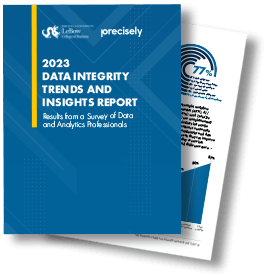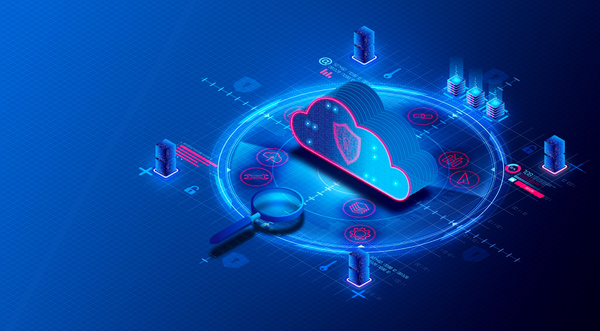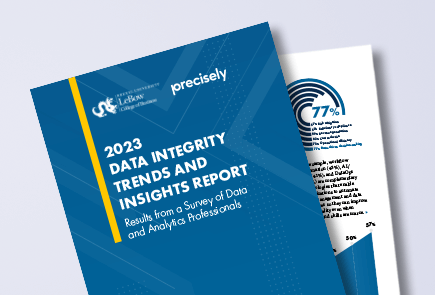
What is Data Observability?

Data is playing a more critical role than ever in modern enterprises, and attention to data quality, governance, and other aspects of overall data integrity are on the rise. As part of this trend, there has been a shift toward increasingly proactive approaches to data quality and trust.
For some time now, data observability has been an important factor in software engineering, but its application within the realm of data stewardship is a relatively new phenomenon. Data observability is a foundational element of data operations (DataOps).
Briefly stated, data observability is about monitoring and attending to the quality and availability of enterprise data as it is moving. Observability extends beyond mere monitoring insofar as it provides deeper insights into what is happening with the data and why. Observability includes alerts, but it also incorporates powerful real-time analytics that drills down to the level of applications and network infrastructure.
At its core, data observability can be broken down into three primary components:
- Discovery, profiling, and monitoring: Collecting information about where data is located, what it contains, and who uses it, and then monitoring that data proactively and continuously
- Analysis: Processing the information about your enterprise data, assessing historical trends, and detecting outliers – all with the use of AI/ML for automated intelligent analysis
- Visualization and alerting: Providing key users with dashboards to visualize real-time data activity, sending proactive alerts to notify users of outliers, and providing additional context that informs them whether the data is ready to be used for decision-making.
Key Elements of Data Observability
Experts generally define data observability in terms of the five key attributes that it manages:
- Distribution tests to determine whether values fall within a normal or acceptable range. In a medical study, for example, adult patients with a weight of fewer than 20 pounds or more than 1,500 pounds would be flagged as likely data entry errors.
- Volume watches for unexpected numbers of new records. Several years ago, for example, Amazon reportedly received hundreds of unintentional orders when a local news anchor repeated the phase “Alexa, order me a dollhouse” on-air, and viewers’ at-home devices dutifully responded to the request. By monitoring for unexpectedly high volumes of orders, companies can spot these kinds of issues early and address them proactively.
- Schema refers to the way data is organized or defined within a database. If a new column is added to a table within your customer database, for example, it can have powerful implications for the overall health of your data. Records that pre-dated the change may contain a null value for the new field or may be set up with a default value. In either case, the change can affect analytics. Many customers have a data catalog solution today that documents the schema and this should be leveraged as part of a data observability solution.
2023 Data Integrity Trends & Insights
Results from a Survey of Data and Analytics Professionals

Data Observability versus Data Monitoring
Initially, it may be tempting to think of data observability as a kind of monitoring system that simply watches for anomalies. In fact, observability extends further than that, providing insights that help data stewards to assess the overall health of their enterprise data.
Consider the following medical analogy. When the nursing team at a hospital records their patient’s vital signs every few hours, they are recording some basic (but important) facts about that person’s metabolism. That is akin to monitoring – watching for any indications that something might be wrong.
When the same patient is connected to diagnostic tools that collect data continuously, in contrast, their medical team has access to a constant stream of data that provides insights to help understand the problem and determine the correct course of action. Visual analytics and other tools offer deeper insights into the patient’s health and provide clues as to what may be happening.
The best data observability tools use advanced technology to apply machine learning intelligence, watching for patterns in enterprise data and alerting data stewards whenever anomalies crop up. That enables business users to proactively address problems and potential problems as they happen. The end result is healthier data pipelines, more productive teams, and happier customers.
Why Is Data Observability So Important?
Trust in data is vital for today’s enterprises, which are using analytics to identify strategic opportunities, as well as to support line-of-business users in making tactical decisions and feeding AI/ML models that automate routine tasks. Data observability plays a powerful role in ensuring that data is trustworthy and reliable, providing these key benefits:
- Ensure trustworthy data for accurate reporting and analytics. By detecting anomalies and automatically alerting the appropriate users to possible problems, data observability empowers organizations to be proactive rather than reactive, addressing data issues that have the potential to disrupt the business and create costly downstream problems.
- Reduce costs and time to resolution for operational issues. Data observability provides vitally important information that helps users quickly determine the root cause of an issue. That means solving problems before they can do significant damage.
- Reduce risk, supporting successful transformation initiatives. Digital transformation is a top priority for many businesses, but they inevitably involve more data and more rapid change than ever before. Data observability empowers data engineers and other users with a critical understanding of what’s happening to your data.
Data Observability is just one of the seven modules in the powerful Precisely Data Integrity Suite – an integrated, interoperable suite designed to deliver accurate, consistent, contextual data to your business – wherever and whenever it’s needed.
Precisely partnered with Drexel University’s LeBow College of Business to survey more than 450 data and analytics professionals worldwide about the state of their data programs. Now, we’re sharing the ground-breaking results in the 2023 Data Integrity Trends and Insights Report.





